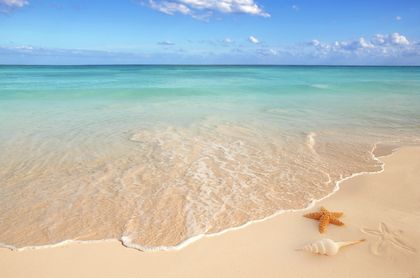Continental margin

The continental margin is that underwater plain connected to continents, separating them from the deep ocean floor. The continental margin is usually divided into three major sections: the continental shelf, the continental slope, and the continental rise.
Continental shelf
Continental shelves are the underwater, gradually sloping ledges of continents. They tend to be quite flat, with an average seaward slope of less than 10 feet per mile (about 3 meters per kilometer). They vary in width from almost zero to more than 930 miles (1,500 kilometers), with a worldwide average of about 50 miles (80 kilometers). The widest shelves are in the Arctic Ocean off the northern coasts of Siberia and North America. Narrow shelves are found off the western coasts of North and South America. The average depth at which the continental shelf begins to fall off toward the ocean floor (the beginning of the continental slope) is about 430 feet (130 meters).
Changes in sea level during Earth's history have alternatingly exposed and then covered portions of the continental shelf. During lowered sea level, land plants and animals, including humans and their ancestors, lived on the shelf. Today, their remains are often found there. For example, 12,000-year-old bones of mastodons, extinct relatives of the elephant, have been recovered off the coast of the northeastern United States.
Vast deposits of muds, sands, and gravels compose the continental shelf. Most commercial fishing takes place in the rich waters above the shelf. Many nations around the world claim ownership of the extensive oil, natural gas, mineral, and other natural resource deposits beneath the continental shelf adjacent to their land areas. Many nations also dump much of their waste in the ocean over the continental shelves.
Words to Know
Continental rise: A region at the base of the continental slope in which eroded sediments are deposited.
Continental shelf: A gently sloping, submerged ledge of a continent.
Continental shelf break: The outer edge of the continental shelf, at which the ocean floor drops off quite sharply in the continental slope.
Continental slope: A steeply sloping stretch of the ocean that reaches from the outer edge of the continental shelf to the continental rise and deep ocean bottom.
Submarine canyon: A steep V-shaped feature cut out of the continental slope by underwater rivers known as turbidity currents.
Turbidity current: An underwater movement of water, mud, and other sediments.
Continental slope
At the seaward edge of the continental shelf is an immense drop-off. The steep edge where this occurs is known as the continental slope. The break point between the shelf and slope is sometimes known as the continental shelf break. The continental slopes are the most dramatic cliffs on the face of Earth. They may drop from a depth of 650 feet (200 meters) to more than 10,000 feet (3,000 meters) over a distance of 60 miles (100 kilometers). In the area of ocean trenches, the drop-off may be even more severe, from 650 feet (200 meters) to more than 33,000 feet (10,000 meters). In general, the steepest slopes tend to be found in the Pacific Ocean, and the least steep slopes in the Atlantic and Indian Oceans.
Submarine canyons. The most distinctive features of the continental slopes are submarine canyons. These are V-shaped features, often with tributaries, similar to canyons found on dry land. The deepest of the submarine canyons easily rival the size of the Grand Canyon of the Colorado River. Submarine canyons are created by the eroding flow of underwater rivers that travel across the continental slopes (and sometimes the continental shelf) carrying with them sediments that originated on the continents. These rivers are known as turbidity currents.
Continental rise
Sediments eroded off continental land, after being carried across the shelf and down the continental slope, are finally deposited at the base of the slope in a region of the ocean known as the continental rise. The deep ocean floor begins at the seaward edge of the rise. By some estimates, half of all the sediments laid down on the face of the planet are found in the gently sloping, smooth-surfaced continental rises.
[ See also Ocean ]